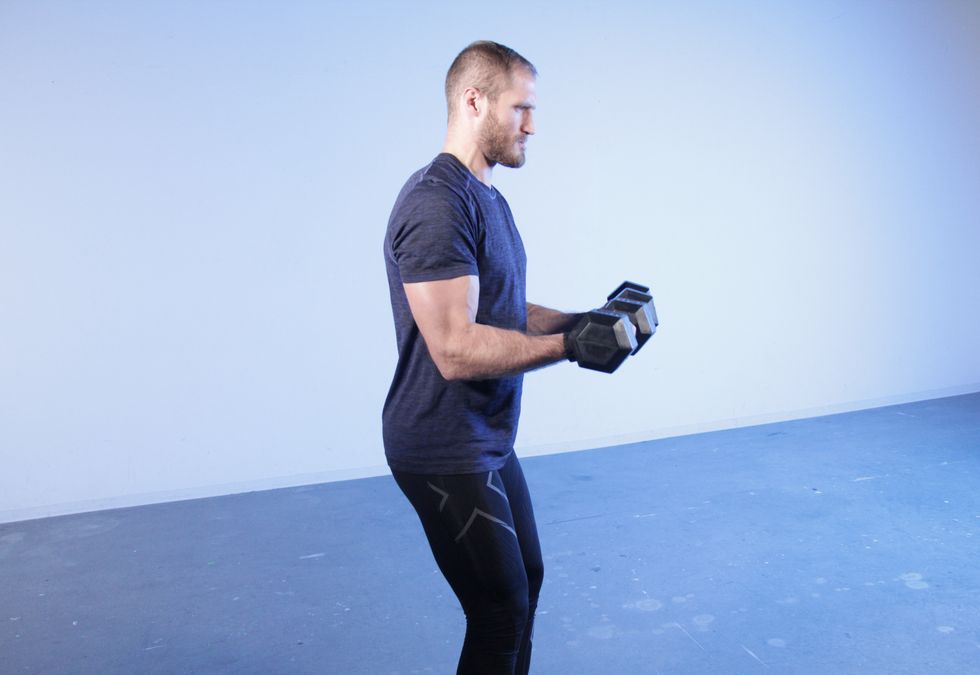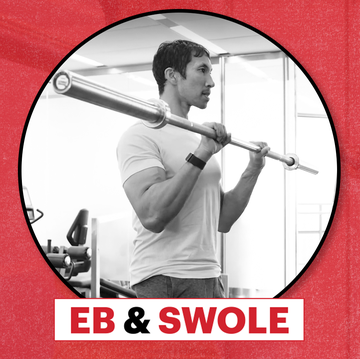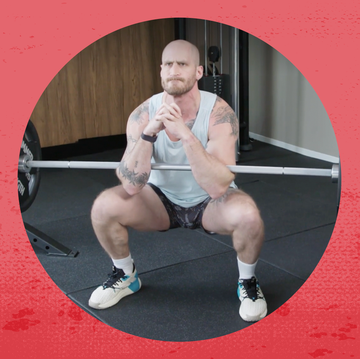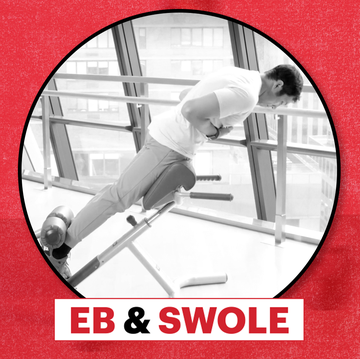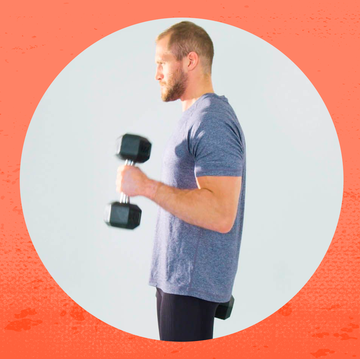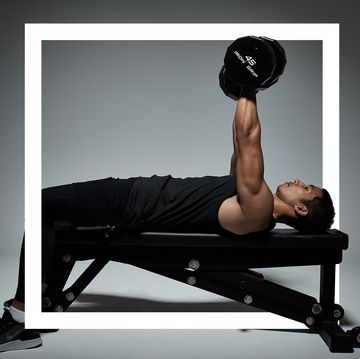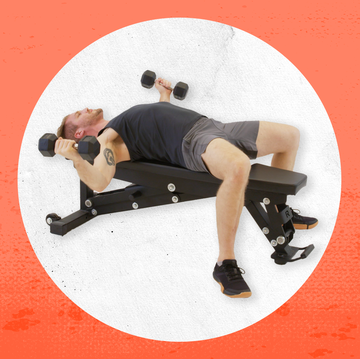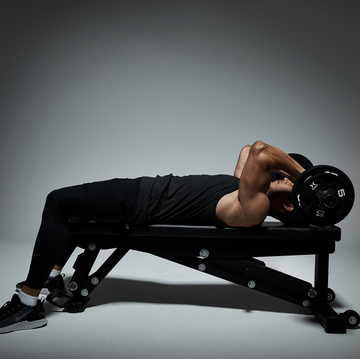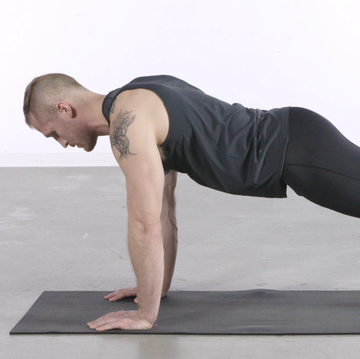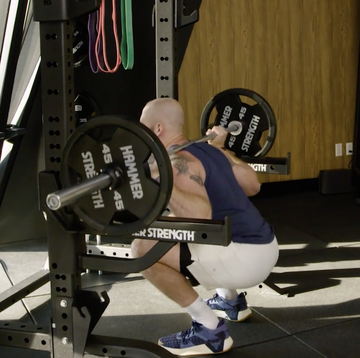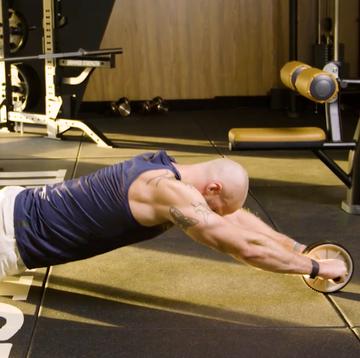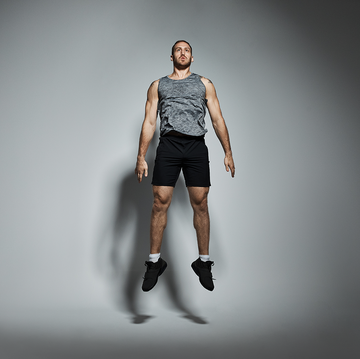At some point in your strength training set, whether you're doing dumbbell biceps curls, lat pulldowns on a machine, or even classic bodyweight exercises like pushups, you're going to reach a point where you cannot finish another rep with good form.
You might be tempted to push through the fatigue to eke out more reps, but in just about every scenario, that's a surefire recipe for sloppy training at best and injury at worst. If you really want to push yourself beyond your initial limit, you're going to want to introduce a drop set structure to your workout.
For this strategy, you need to know how to approach your workout right—especially because it's such a killer way to pack on additional volume. Let Men's Health fitness director Ebenezer Samuel, C.S.C.S. and fitness editor Brett Williams NASM-CPT guide you through the technique's subtleties, saving you from going about it the wrong way and keeping you from unlocking your fitness potential.
The drop set opens up your workout plan to progressive overload without needing to move up to heavier weights. The goal is to increase the time your muscles spend under tension, creating more metabolic stress on your muscles, which will in turn result in size and strength gains.
How to Do Drop Sets
There are a few different methods that you can use to implement drop sets, but at its most basic, the technique is simple. Perform a standard set of reps at a challenging weight, pushing yourself to fatigue by the end of the prescribed reps (this is task or technical failure). But instead of taking time to rest or pushing through your poor form to keep working, you're going to take one of two approaches.
Load-Based Drop Sets
In approach one, the standard load-based drop set, you'll immediately 'drop' down to a lighter weight, then continue to perform reps. This method is often used with isolation exercises like biceps curls that use dumbbells (if you've ever heard the expression 'running the rack,' this is where it comes from).
Mechanical/Technique Drop Sets
Instead of moving to a lighter weight, you'll shift the mechanics or technique of the exercise in order to keep working after the initial set. That might mean shifting your grip on the weight or only emphasizing part of the range of motion, or some other simple tweak that allows you to keep up the time under tension with good form even though your muscles are already fatigued. In another form, the mechanical or technical element is used first; think of something like a half-full curl, then finishing with standard reps.
Before you throw drop sets into your training plan, take note of these detailed tips from Samuel for the best possible results.
Use Both Varieties
Eb says: There are two kinds of drop sets: Standard load-based drop sets, where you start with a heavy weight, and then "drop" to a lighter weight, or mechanical and technique drop sets, which have you doing reps with a technique to create challenge early then "dropping" the technique for standard reps late.
Both varieties have value. I love mechanical and technique drop sets especially, because we get to create the metabolic stress needed for growth without always pounding our body with weight. At the same time, we need the overall load that load-based drop sets can offer in order to spark total body growth. Use both varieties in your workouts.
Start Heavy
Eb says: Especially with load-based dropsets, push yourself to go heavy before the drop. Aim to use the heaviest good-form training weight you would for an exercise, because once you drop, you'll get your chance to pile up reps. If you start too light, you'll wind up doing massive sets that total 20-25 reps, but once you're landing at those numbers, the entire dropset is losing value, and you'll also lose focus, too.
Focus On the Back End
Eb says: Once the weight gets lighter, it's incredibly easy to start cheating. You're tired and you know you're going lighter, so it's easy to step back on the mental engagement. Don't do that, though.
Work to lock in your form and make the back end of each drop set perfect. Think of the back end of each drop set as a chance to focus on the movement, not as a chance to simply get through the movement.
Stay Moving
Don't take time to rest between the start of a drop set and the drop. Instead, move quickly. You should be dropping the weight you just did, then picking up your next weight and quickly starting your next set. Or you should be changing out plates as quickly as possible if you're on a barbell move (have a partner help you) so you can get back to work on the second phase.
Too many people take 10, 15, 20 seconds to do this. Then you're not doing a drop set. You're just doing another set.
Want to master even more moves? Check out our entire Form Check series.

